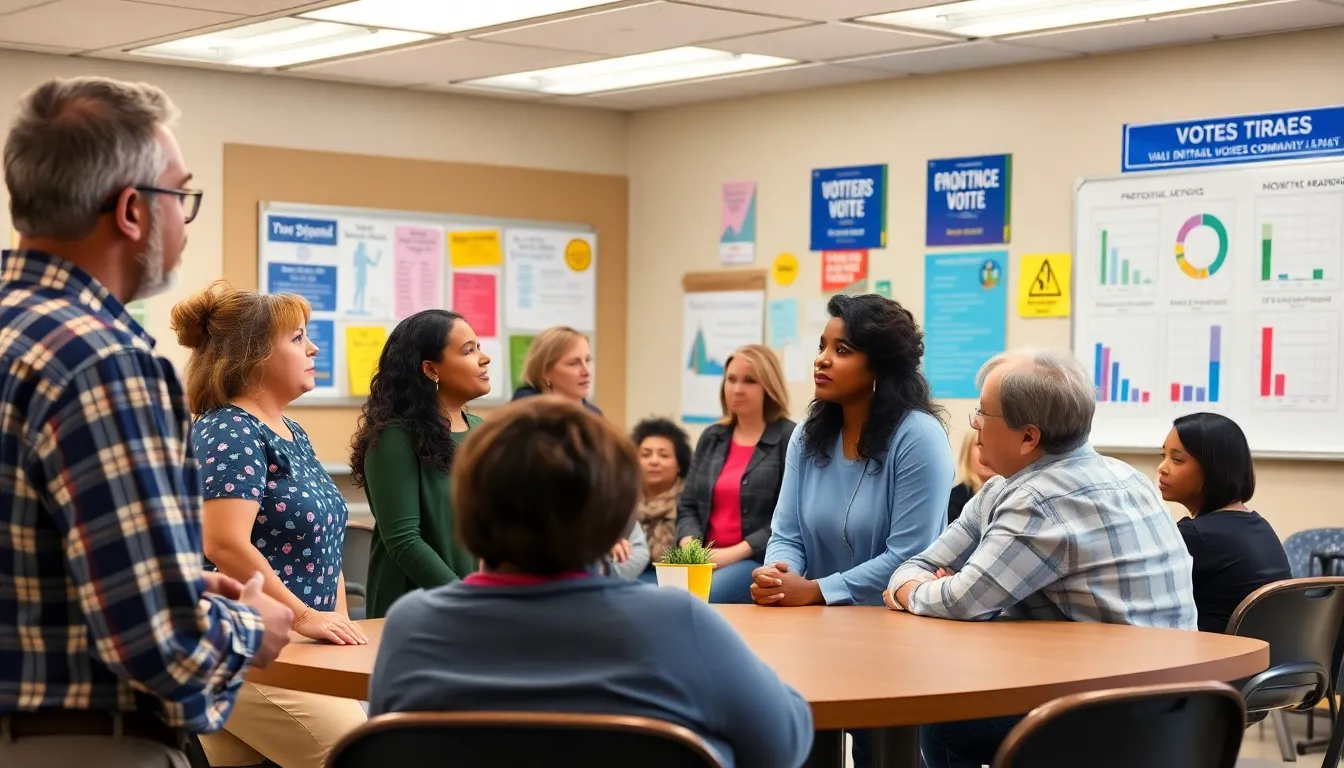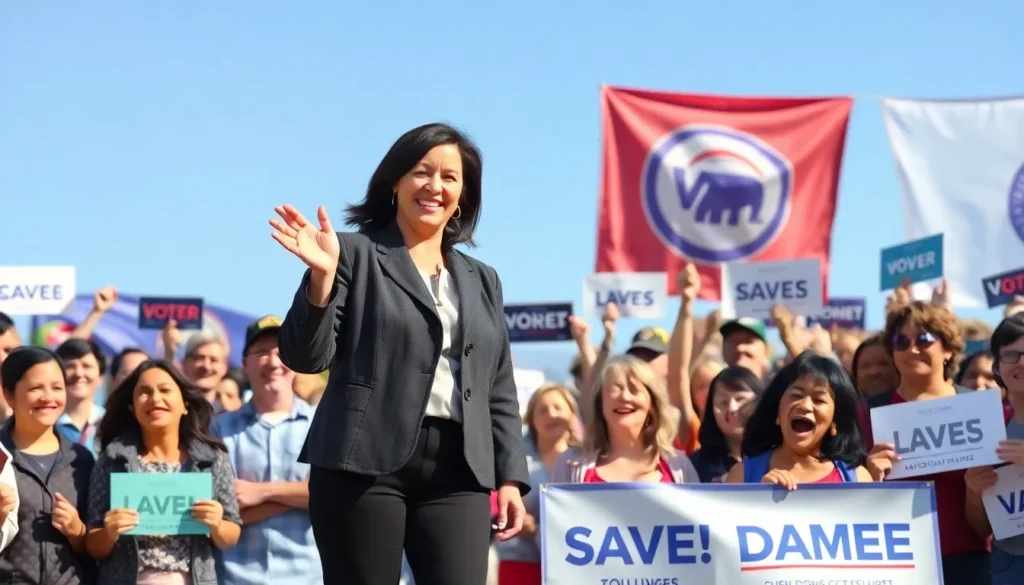In a world where every tweet can sway an election and every meme can ignite a movement, political marketing has become the secret sauce behind successful campaigns. It’s not just about shaking hands and kissing babies anymore; it’s about crafting a message that resonates, entertains, and persuades. Think of it as the art of making politics palatable—like turning spinach into a delicious smoothie.
Gone are the days when candidates relied solely on traditional ads and town hall meetings. Today, they harness the power of social media, data analytics, and even a splash of humor to connect with voters. Whether it’s a viral video or a clever hashtag, political marketing has evolved into a dynamic battlefield where creativity meets strategy. So buckle up, because understanding this fascinating realm might just be the key to unlocking the next big political breakthrough.
Table of Contents
ToggleOverview of Political Marketing
Political marketing has transformed significantly in recent years. Campaigns now leverage the power of social media platforms like Facebook and Twitter to reach vast audiences quickly. Creative messaging has become a cornerstone of effective strategies. Political campaigns employ humor, relatability, and compelling narratives to engage potential voters. Data analytics plays a crucial role in shaping these strategies by analyzing voter behavior and preferences.
Modern political marketing emphasizes targeting specific demographics. Tailoring messages to resonate with various groups enhances engagement rates. Utilizing digital tools enables campaigns to adapt their strategies in real time based on audience reactions. Moreover, influencers and public figures often amplify candidates’ messages, further increasing their reach.
The integration of traditional methods persists but evolves with technological advancements. Television ads, though still relevant, coexist with online content that captures audience attention more dynamically. Grassroots movements rely heavily on online platforms to rally support and mobilize volunteers.
Success in political marketing hinges on mastering this diverse landscape. Identifying trends and adapting to audience preferences proves essential. Campaigns that effectively balance data-driven strategies with authentic communication tend to resonate with voters best. A blend of these elements creates powerful marketing initiatives that can significantly impact election outcomes.
Strategies in Political Marketing

Political marketing involves identifying and implementing specific strategies to engage voters effectively. Key strategies focus on understanding the target audience and developing impactful messages.
Target Audience Identification
Identifying the target audience forms the foundation of any political campaign. Campaigns analyze demographics such as age, gender, location, and socioeconomic status. Understanding these factors assists in segmenting voters into specific groups. Campaigns use data analytics tools to determine voting patterns and preferences. Engaging with audiences through surveys and focus groups provides essential insights. Creating tailored strategies for different segments enhances overall voter engagement and increases the chances of success.
Message Development
Message development plays a critical role in resonating with the electorate. Crafting clear, concise, and compelling messages ensures effective communication. Campaigns articulate core values and policy positions that align with voters’ interests. Using storytelling techniques captivates audiences and creates emotional connections. Incorporating humor can also make messages memorable and relatable. Furthermore, leveraging multiple platforms, including social media and traditional media, maximizes outreach. Regularly refining messages based on feedback and data ensures relevance and effectiveness throughout the campaign.
Digital Marketing in Politics
Digital marketing has become essential in modern political campaigns, with social media and online platforms serving as vital tools for candidate engagement.
Social Media Campaigns
Social media campaigns often significantly influence voter perception and behavior. Platforms like Facebook and Twitter offer unique channels for direct communication between candidates and voters. Engaging content, such as videos and infographics, captures audience attention more effectively than traditional ads. Tailored messaging that speaks to specific demographics increases the likelihood of voter engagement. Candidates can use tools like targeted ads to reach voters based on interests, location, and behaviors. Measuring effectiveness through analytics allows campaigns to refine strategies in real time. Regular interactions through live sessions and Q&A events foster community and build trust. Ultimately, a strong social media presence can enhance visibility and convince undecided voters.
Online Fundraising Techniques
Online fundraising techniques have transformed campaign financing significantly. Crowdfunding platforms enable candidates to raise small donations from a vast audience, democratizing political contributions. Implementing effective calls to action on websites and social media encourages supporters to donate. Engaging storytelling about the campaign’s mission often inspires financial support and establishes emotional connections. Email campaigns targeting different voter segments can effectively solicit donations from various demographics. Candidates can also host virtual fundraising events, expanding reach beyond geographic limitations. Utilizing social media to promote these campaigns increases visibility and participation. Quick responses and personalized acknowledgments to donors enhance relationships and foster long-term support.
Traditional Marketing Techniques
Traditional marketing techniques continue to play a significant role in political marketing, complementing digital strategies. These methods include print advertising and public speaking engagements.
Print Advertising
Print advertising remains a valuable tool in political campaigns, often used in newspapers and magazines. Campaigns utilize eye-catching visuals and concise messages to grab voter attention. Brochures and flyers distribute information during events and door-to-door canvassing. Effective print ads convey a candidate’s key messages while reinforcing brand identity. Many campaigns include targeted distribution to reach specific demographics, ensuring a broader audience engagement. The tactile nature of print media can create memorable impressions, contributing to a well-rounded marketing strategy.
Public Speaking Engagements
Public speaking engagements serve as a platform for candidates to connect directly with voters. Candidates often participate in town halls and community events to foster personal relationships. Engaging speeches resonate emotionally, helping establish credibility and trust. Many successful candidates use these events to address local issues and respond to audience questions. Public speaking also allows for immediate feedback, helping to gauge voter sentiment. Creating a relatable narrative during these engagements captures attention and encourages community involvement.
Challenges in Political Marketing
Political marketing faces several challenges that can hinder campaign effectiveness. Voter engagement often fluctuates, driven by factors like social media dynamics and current events. Understanding the fast-paced nature of digital platforms becomes crucial for maintaining relevance. Campaigns struggle to keep up with the rapidly changing preferences of voters, making adaptability essential.
Data privacy regulations also pose significant obstacles. Compliance with laws such as the General Data Protection Regulation (GDPR) requires campaigns to navigate complex legal landscapes while ensuring voter data security. Additionally, misinformation campaigns can distort candidate messages and confuse voters. Combating false narratives demands quick responses and strategic messaging to preserve credibility.
Resource allocation is another challenge. Campaigns must distribute budgets effectively across diverse channels, balancing traditional advertisements with digital outreach. Smaller campaigns often struggle to secure adequate funding, limiting their reach and impact. Without sufficient financial backing, crafting compelling messages and engaging with voters becomes increasingly difficult.
Furthermore, saturation of information presents hurdles. Voters encounter numerous messages daily, leading to desensitization. Standing out in this crowded space requires innovative strategies that capture attention and resonate emotionally. Building genuine connections with voters remains essential for impactful communication.
Finally, measuring success in political marketing proves complex. Metrics vary across channels, complicating the evaluation of campaign effectiveness. Identifying key performance indicators relevant to specific goals enables better insight into what strategies yield positive results. Crafting well-defined objectives aids in aligning efforts for enhanced engagement.
Navigating these challenges is vital for political campaigns aiming to succeed in a competitive landscape. By addressing these issues, campaigns can refine strategies and connect more effectively with voters.
Political marketing has become an essential component of modern campaigns. As candidates navigate the complexities of voter engagement they must adapt to the ever-changing landscape shaped by technology and social media. The integration of traditional and digital strategies allows for a more comprehensive approach that resonates with diverse audiences.
By leveraging data analytics and creative messaging campaigns can effectively connect with voters on a personal level. The challenges in this field are significant but with the right strategies in place campaigns can thrive. Ultimately mastering political marketing is crucial for any candidate looking to make a lasting impact and achieve electoral success.




